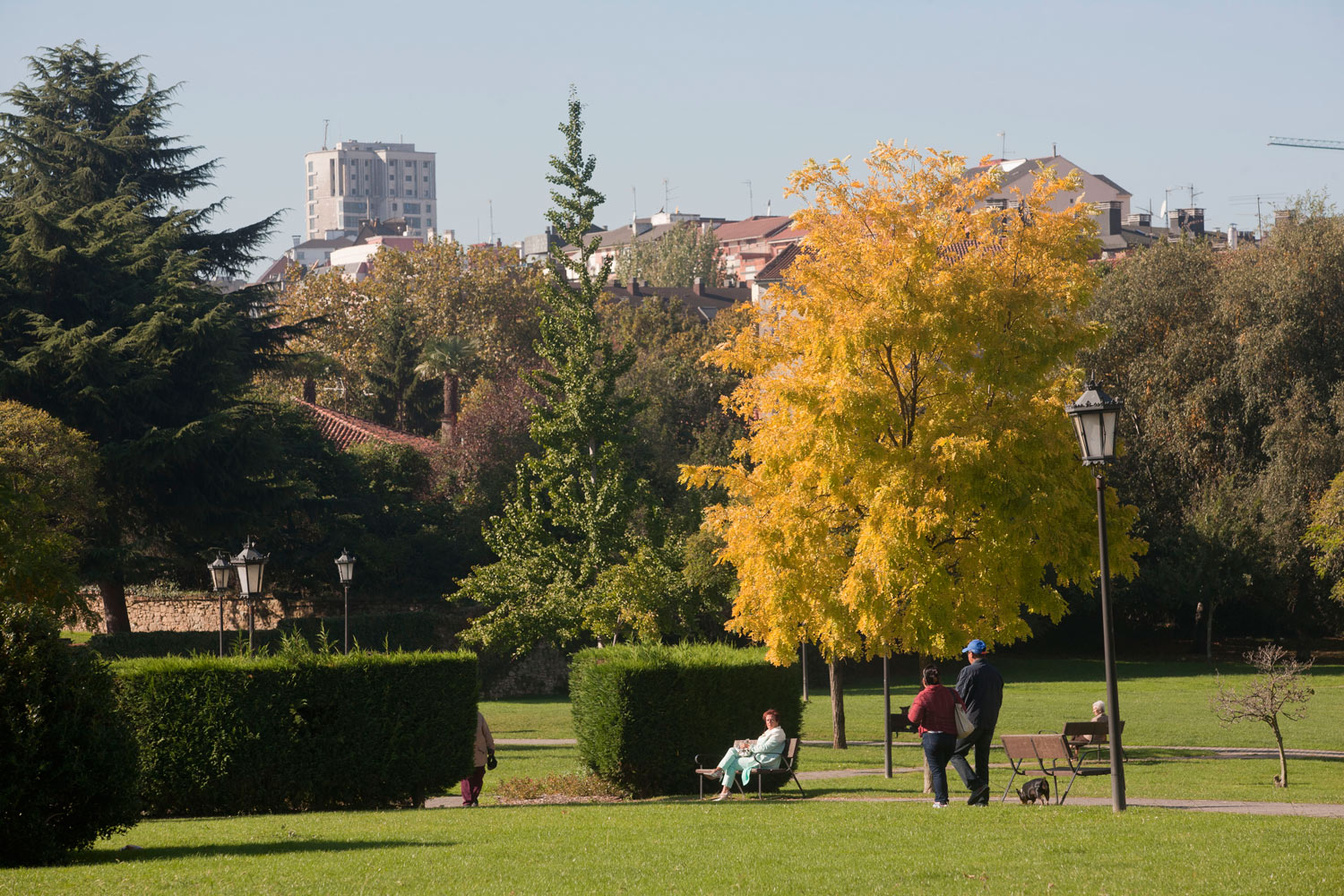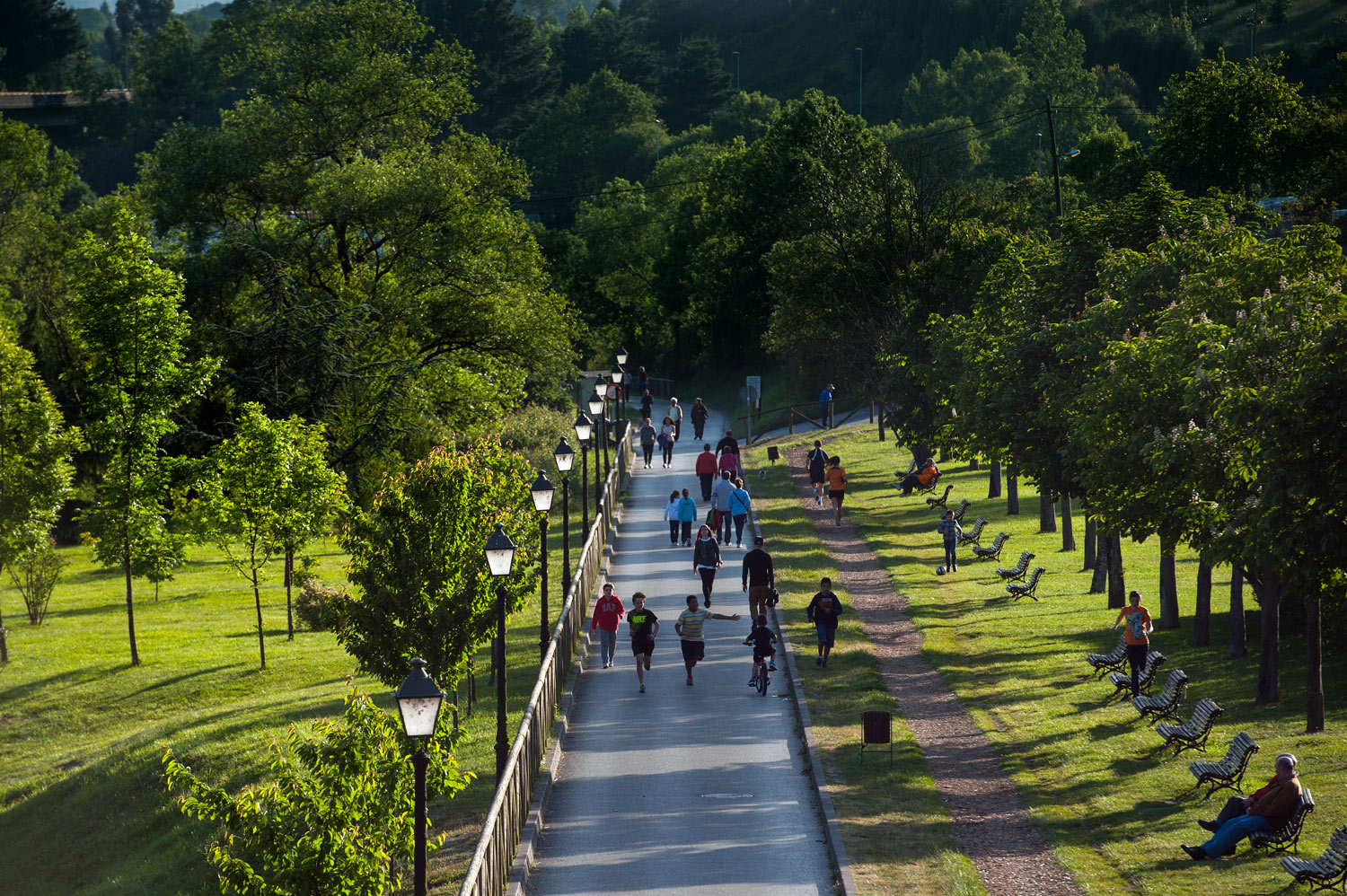Parks
PARKS
Campo San Francisco
The municipality of Oviedo has 586 green spaces, totalling 2,211,030 m2 of parks and gardens. The lung of Oviedo is Campo San Francisco Park. 90,000 square metres, of which 55,000 are green areas with almost one thousand, some of which are hundreds of years old. The history of Campo San Francisco is linked to the history of Oviedo. Its origin is linked to the construction of a Franciscan monastery in the 13th century that was erected where Parliament Building of the Principality stands today. Campo San Francisco was originally a group of vegetable gardens owned by the Town Council, several convents, and some private individuals. In 1534, the representatives of the city and the Cathedral Chapter decided to transform it into a space for public use and in the middle of the 18th century the Paseo del Bombé (Bombé Walk) opened on the western edge of the park and, in the 19th century, the Paseo de los Alamos (Poplar Tree Walk) appeared as a landscaped avenue parallel to Uría Street. Today, there is a mosaic on the pavement by the artist Antonio Suárez.
San Francisco Park is used for multiple purposes. Several children's areas make it a playground for the youngest in the family. Sculptures and ornamental fountains, such as La Fuentona and Fuente de las Ranas (Fountain of the Frogs) or Caracol (Snail Fountain) make this area an ideal place to go for a walk or sit and read for a while. It is worth stopping to admire the music kiosk (1899), by Juan Miguel de la Guardia, the Romanesque gate of the old temple of San Isidoro or the sculptures, such as La Torera or the monuments dedicated to José Tartiere, Clarín, or Sabino Fernández Campo.
However, it is next to the duck pond where what has become for many people one of the main symbols of Oviedo is located: “Mafalda”. Since October 2014, this famous character created by Quino, winner of the Prince of Asturias Prize in that year, ‘contemplates’ the pond. A work by Pablo Irrgang, the sculpture "is a twin" of another in the neighbourhood in San Telmo, Buenos Aires.

Purificación Tomás and Parque de Invierno (Winter Park)
Besides Camo San Francisco Park, there are other areas that, given their characteristics, have been included in a "special category". These are Purificación Tomás Park (Monte Alto) and Parque de Invierno (Winter Park).
Purificación Tomás Park (213,667m2) is the largest in the council. Located to the north of the neighbourhoods of Vallobín and La Florida, on an estate to the west of Mount Naranco known as “Monte Alto”, it was inaugurated in 1991. It stands on an ancient pre-Roman hill fort in an exceptional setting with stunning views of the Naranco and the Aramo Mountain Range. It has a children's playground, walks, a picnic area, and gardens. It also offers sports enthusiasts a variety of activities, such as fronton, sports courts, a cycling track, a volleyball court and a disc golf course.
Parque de Invierno (Winter Park) (171,368 m2) is the second largest in Oviedo. To the north, it is bordered by Muñoz Degraín Street and is the starting point of the Senda Verde (Green Route) that goes to Fuso de la Reina along an old railway line that runs parallel to the Gafo River. It has a wide range of botanical species and provides all kinds of facilities for all tastes, such as a skating track, a climbing wall, gym equipment, and a sports circuit, a children's play area and ping-pong tables. But there is even more; the youngest in the family can enjoy the popular Palacio de los Niños (Children's Palace), a municipal facility in which games and activities are held every day. There are also several municipal swimming pools nearby as well as the university sports facilities and the San Gregorio student residence.


Parque del Oeste (West Park) and Santullano
Between La Ería and Olivares, we can find Parque del Oeste (West Park) (82,032 m2). It was originally a rural area, which today has developed significantly. This is due to improvements in the access roads resulting from the construction of the Carlos Tartiere Stadium, where the local football team plays and that can be accessed directly from the park. If you walk down by the striking ornamental fountain with a terraced layout that flows through the park, you will soon reach the La Florida neighbourhood over a complex walkway-suspension bridge.
In the El Milan district, in a residential area built around the Humanities Campus of the University of Oviedo, we have the Parque de Santullano (Santullano Park), also known as San Julian de los Prados (17,235m2).
And many more ...
In the neighbourhood of Santo Domingo, to the southeast and a few metres from the old quarter, is El Campillin, a park in the shape of a triangle, delimited by Padre Suárez and Archbishop Guisasola streets, which converge at the symbolic zero kilometre point of the city, where pilgrims once entered the city on their way to the Cathedral of Oviedo. The origin of El Campillin dates back to the post-war period when it was built on a plot of land cleared by a bombing raid. Until the 18th century, it was known as “Campo de los Herreros” (Blacksmith’s Field) because it was the venue of a flea market where ancient objects were sold that attracted a diverse public and that still exists today on Sunday mornings as a spontaneous flea market where you can find all kinds of items, second-hand clothes... It features a newly updated children's playground and ping-pong tables.
And less than one kilometre from El Campillin, we have the “secluded” Jardines del Marques de la Rodriga, known as Jardines de la Rodrigo (7,966 m2), which provide an opportunity to enjoy nature and a haven of peace in the heart of the city of Oviedo. The gardens were adapted by the City Council in 2003 after they were given to the city by the Archbishopric. This is also the case of Parque del Hórreo (Hórreo Park) in Colloto (13,350m2), where the many botanical species provide a pleasant walk with benches where you can rest, picnic tables, a pool, a municipal pavilion, as well as facilities for children.
In Trubia, you will find Parque Cataluña (Catalonia Park) (5,216m2), where besides the usual playgrounds and walks with benches, there is an exercise track and table football.
In La Carisa, we have the Parque Ciudad de la Tampa (4,625 m2), in La Monxina, the Parque Enrique Quirós (4,241 m2) and finally, in Priañes, the Parque Priañes (2,330 m2).
